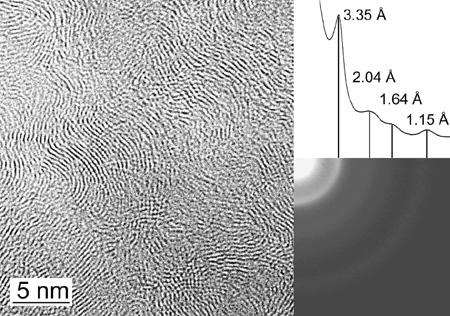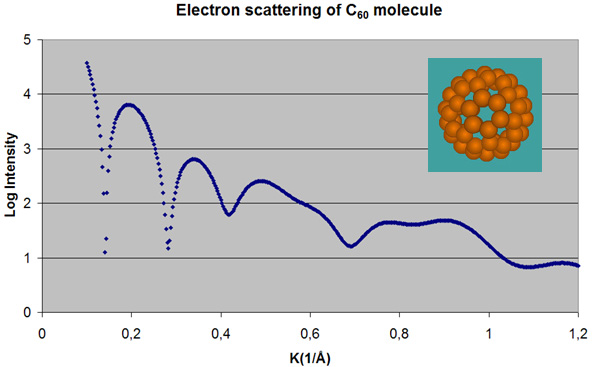|
Electron scattering of nanoclusters and amorphous materials
|
|
|
|
High resolution TEM image of fullerene-like CNx and electron diffraction pattern with its intensity distribution. The diffraction pattern indicates that the atomic short range orer of CNx is similar to that of graphite. Outstanding Paper Award
of EMS 2010 |
|
A model is proposed to calculate the electron diffraction of nanocrystaline materials through electron scattering of nanoclusters. Nanocrystalline
material is modeled as aggregate of crystalline clusters of different size,
shape and orientation. Amorphous materials are interpreted as nanocrystals of ultrafine grain (cluster) size composed
of 10-30 atoms. Calculations of electron scattering of fullerene, graphite, graphene and diamond nanoclusters
is used to evaluate the short range order in amorphous and fullerene-like
allotropes of carbon. Diffuse peaks in the distribution of scattered
intensity appear for average cluster size of 10-15 atoms. Nanocrystalline
character appears when the average cluster size exceeds
|
|
|
|
|

